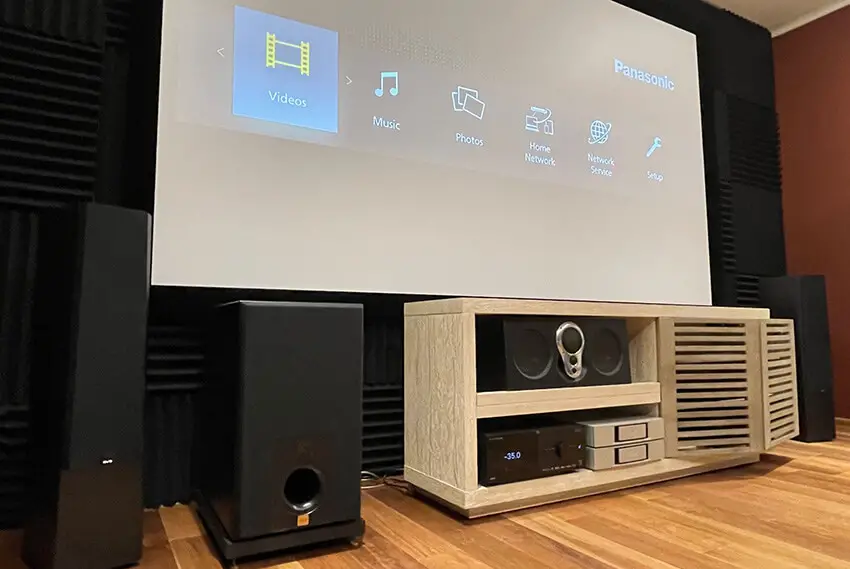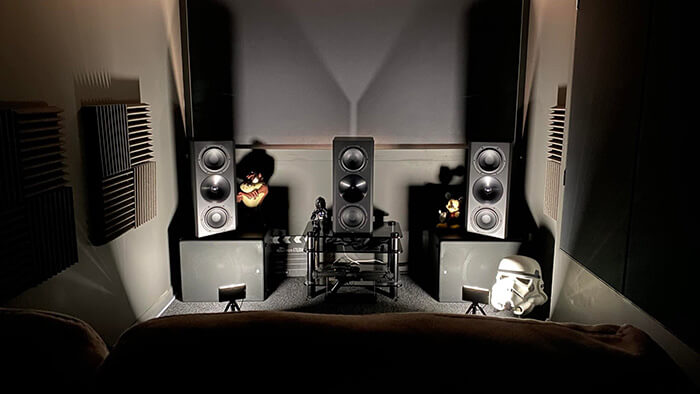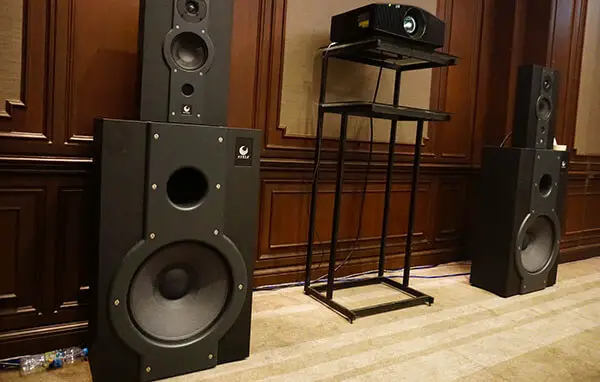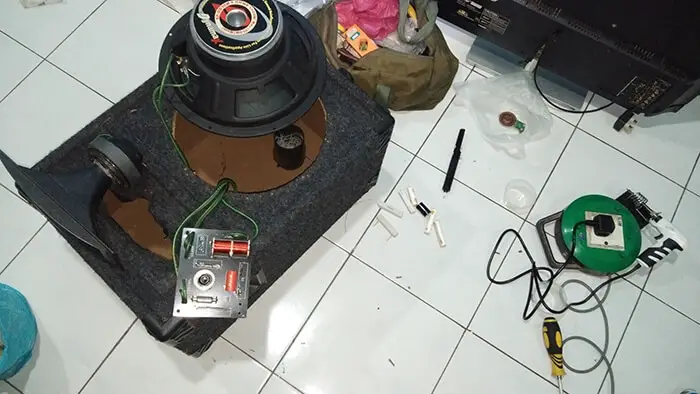If you want to connect a center speaker to a stereo amplifier, it will require several steps. Thankfully, these steps are very simple to understand, and you can execute them in no time. In short, you need to use a speaker wire to connect both of devices and ensure an uninterrupted power supply. If you follow my guidelines correctly, you will face no difficulty in setting up your desired system.
Now, I am going to describe to you the step-by-step process of connecting a center speaker to a stereo amplifier. After that, I will also show you how to diagnose some common problems including some bonus tips. I certainly hope you can do it by yourself at home.
Connect a Center Speaker to a Stereo Amplifier [Step-by-Step Guidelines]
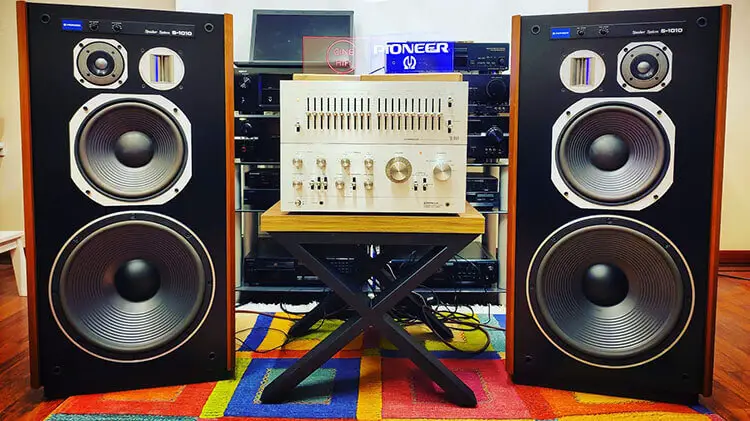
Before we start, you should know that the process I am going to show you will work regardless of if you own an amplifier or a receiver. Generally, all receivers also work as amplifiers as they have built-in amplifiers. However, not all amplifiers will work as a receiver. Hence, you can follow these steps whether you own an amplifier or a receiver.
Follow the detailed guidelines in order to connect a center speaker to your stereo amplifier or receiver.
1. Ensure Safety:
For your own and the devices’ safety, make sure to turn off any power sources. So, you should unplug your stereo amplifier or receiver from the power source.
2. Establish Connection:
You will require good-quality speaker wires for this part. Use the cables to establish a connection between the center speaker and the receiver through AV connection ports.
3. Check the Rear of the Stereo Amplifier or Receiver:
Generally, all the connection ports are situated at the rear of your device. So, check the rear of your amplifier or receiver and connect the speaker wires to the speaker terminal. As there are a lot of ports, it’s easy to mess things up. But carefully connect the wires, otherwise, the audio quality will not be satisfactory, or it might not even work.
4. Check for Spring Clips:
It is more probable that your device’s terminal has spring clips. If so, push both clips, which are positive and negative terminals marked by red and black color respectively. After pushing it, let go of both the clips.
5. Ensure Post Terminal Binding:
In order to do this, you have to twist both binding posts counterclockwise. Additionally, relax the red and black posts.
6. Plug in Speaker Wires:
In this part, you can plug in the speaker wires in the accessible slots under the binding posts. You should twist the binding posts clockwise so that the wires are perfectly attached to the slot. It will remove any doubts about loose connections. You need to perform this step very carefully as loose connections can severely impact the quality of your sound.
7. Connect the Other End of the Wire:
Now, you have completed almost all the required steps. You can take the other end of the speaker wire and insert it into your center speaker. Position your devices prior to the setup process to avoid any entanglement of wires.
8. Final Step:
As you are done with all the necessary connection steps, you can turn on the power to see if everything is working according to the plan. Play some music on the system to check for any inconveniences.
As you have followed every step, you should be done with the work. Now, it’s time to enjoy music with your newly set up devices. However, you might also face some issues after setting up on your own. Now, I will discuss some common issues that might occur during the setup process and some additional advice to diagnose and solve such issues.
Some Common Problems You Might Face and Basic Solutions
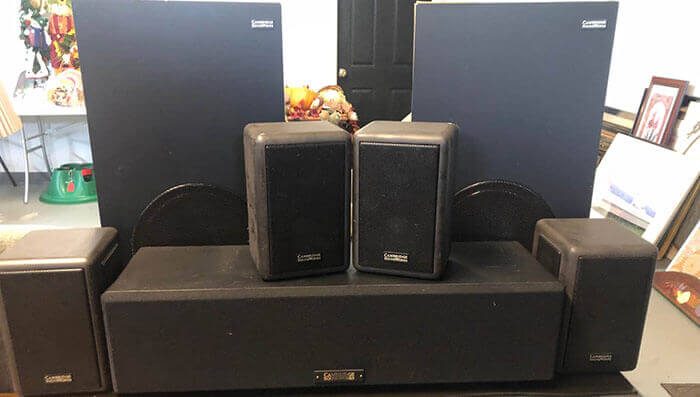
It’s unlikely that you will face any problems after following my guidelines. However, some common problems might occur. These are:
- If you are getting no sound from the system, check the volume of the speakers. Sometimes they are set to low or turn the volume knob from zero to your desired level.
- A center speaker should be incorporated with a 5.1 or 7.1 surround sound system. Otherwise, you cannot experience the full benefit of the system.
- You should always use high-quality speaker cables. Otherwise, loose connections or broken cables will completely fail to produce sound from the system.
- To get the best surround sound experience, consider adding speakers in the rear as well.
- Make sure to use robust power cables. High-impedance systems consume a lot of wattage from the electrical source. So, a robust power cable will make sure your devices are safe from any overload or fluctuations in electricity supply.
- Position your speakers according to the shape of your room to get the best experience. Avoid reflections of sound.
- There is a chance of your speakers getting damaged due to impedance discrepancies. Make sure the center speaker and the current speaker have the somewhat same impedance. Otherwise, it raises the possibility of speaker malfunction.
Some Bonus Tips to Arrange the Perfect Surround Sound
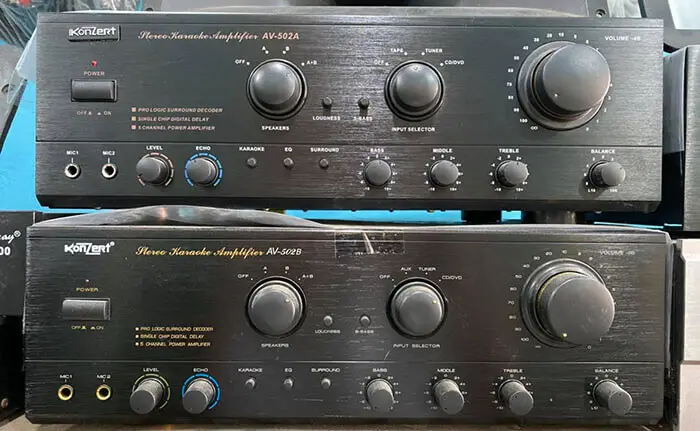
Here are some bonus tips to help you set up the best-sounding setup possible.
1. You should make sure that all of your speakers are of the same caliber. Otherwise, some will be producing a specific signature of sound and others a different quality. These will not complement each other and ruin the whole experience. Instead, choosing the same caliber speakers will complement the sound signature and you will experience an amazing sounding system.
2. A center speaker is a vital component of any home theater system. If you are more inclined toward watching movies and TV shows, the center speaker delivers around 70% of the dialogue. So, position it accordingly.
3. Most of the action is always happening in the center of the screen. So, your center speaker is the most important part of the system. Make sure it is delivered with enough power to produce the crisp sounds that you desire.
4. You should position your center speaker directly in front of you, maybe under the projector screen or the TV. It will maximize its potential if you sit directly in front of it.
Frequently Asked Questions
Can you add a center channel speaker?
Definitely. You can add a center channel speaker to your existing system. Just make sure you get a matched speaker to your left or right speakers.
Can I only use a center speaker?
Theoretically, you can. However, in order to get the best sounding experience, you should pair it with a 5.1 or 7.1 surround sound system.
Do I need a center speaker for music only?
If your sole purpose is to listen to music, then it is probably not necessary. A center speaker performs best when you set it up for a home theater for watching movies or TV shows.
Conclusion
It is a fairly simple process to connect your center speaker with your amplifier or receiver. You should face no major issues while establishing the connection. However, I have also discussed problems that might occur and the solutions to them. In the end, I have included some bonus tips to make sure you are experiencing the best sound possible from your center speaker setup. I certainly hope that my guidelines can help you.
Thank you for patiently staying with me and I am looking forward to seeing you again with another query.
